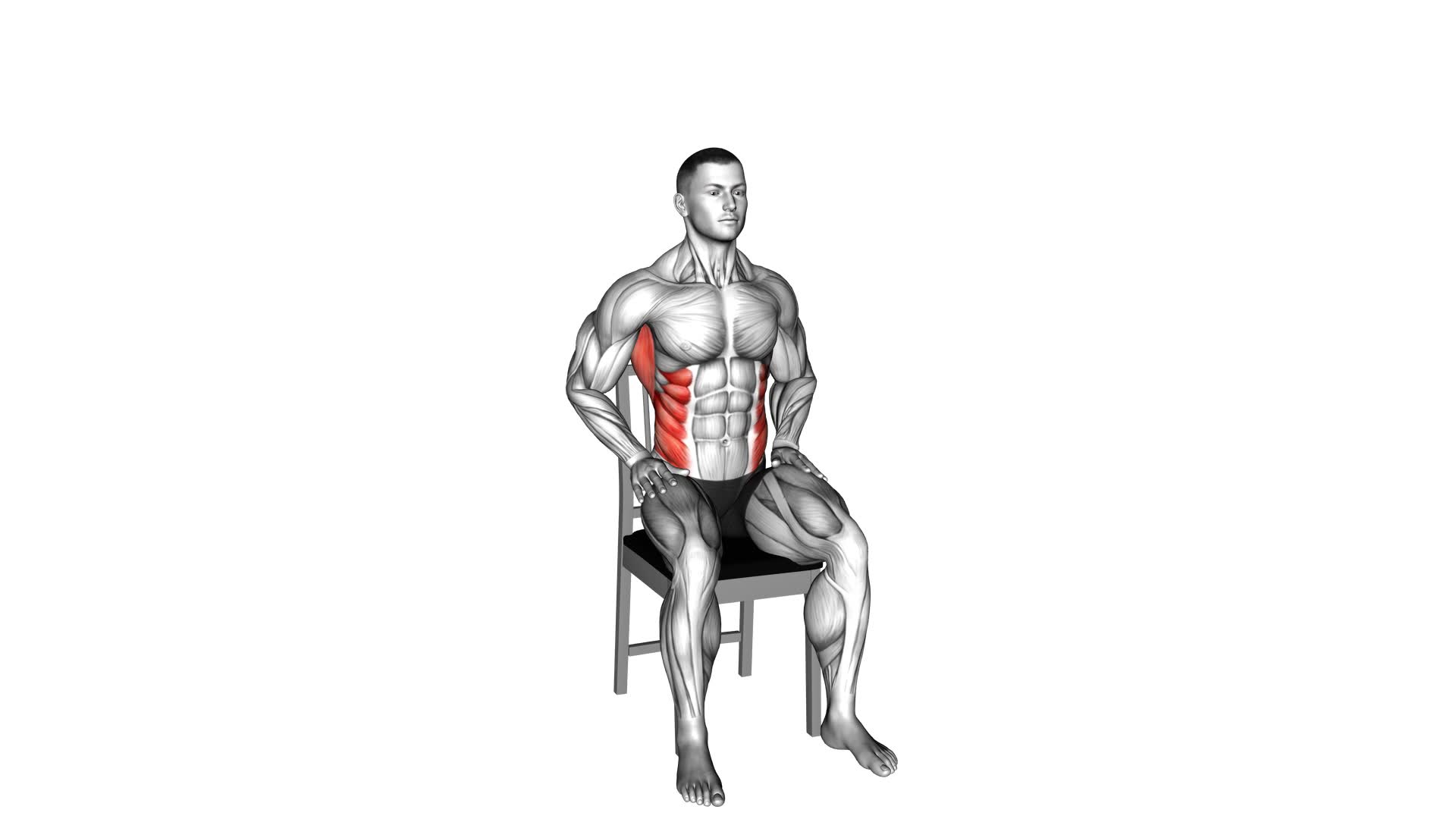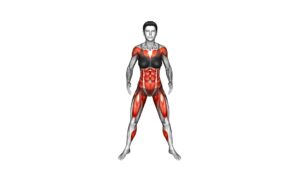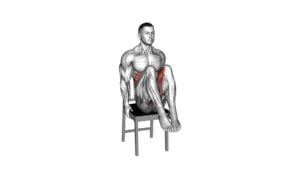Diagonal Reach on Chair (male) – Video Exercise Guide & Tips

Get ready to elevate your workout routine with the Diagonal Reach on Chair. This video exercise guide and tips are designed specifically for males looking to improve their strength and flexibility. With proper set-up and equipment, you'll learn step-by-step how to perform this challenging exercise.
Watch This Exercise Video
Plus, we'll share valuable tips to help you maintain proper form and technique. Whether you're a beginner or advanced fitness enthusiast, modifications and progressions are available for all levels.
Say goodbye to common mistakes and hello to reaching new heights on the chair!
Key Takeaways
- The Diagonal Reach on Chair is a versatile exercise that improves upper body strength and increases flexibility in the shoulders and chest.
- This exercise targets muscles in the shoulders, chest, and arms, while also engaging the core muscles for stability and balance.
- It is important to have a sturdy chair that can support weight and a proper set-up with a mat or towel for added comfort and stability.
- Proper exercise positioning includes sitting with a straight back and engaged core, feet shoulder-width apart and planted firmly on the ground, and extending the arms diagonally towards the chair at shoulder height.
Benefits of the Diagonal Reach on Chair
The benefits of the Diagonal Reach on Chair include improved upper body strength and flexibility. This exercise targets the muscles in your shoulders, chest, and arms, helping to build strength and tone in these areas. By reaching across your body and extending your arm, you engage your core muscles, enhancing stability and balance.
One of the main benefits of this exercise is its versatility. There are several variations that you can incorporate to target different muscles and increase the challenge. For example, you can add weights or resistance bands to intensify the workout and further enhance your upper body strength.
Another benefit of the Diagonal Reach on Chair is its ability to improve flexibility. As you reach across your body, you stretch the muscles in your shoulders and chest, increasing their range of motion. This can be particularly beneficial for individuals who spend long hours sitting at a desk or have tightness in these areas.
Proper Set-up and Equipment for the Exercise
To properly set up and perform the Diagonal Reach on Chair exercise, you'll need some essential equipment.
First, make sure you have a sturdy chair that can support your weight.
Additionally, you'll need a mat or towel to place on the chair seat for added comfort and stability.
Essential Equipment for Setup
You'll need a stable chair for proper setup and equipment for the diagonal reach exercise. Chair exercises are a great way to incorporate strength training into your workout routine without needing expensive workout equipment.
When choosing a chair, make sure it's sturdy and can support your weight. Avoid chairs with wheels or armrests, as they may hinder your movement during the exercise. Additionally, ensure that the chair is at a height that allows your feet to rest flat on the ground. This will provide you with a stable base for performing the diagonal reach exercise effectively.
Investing in a good quality chair is essential for maintaining proper form and maximizing the benefits of this exercise.
Correct Exercise Positioning
To achieve correct exercise positioning for the diagonal reach on chair exercise, position yourself with your feet flat on the ground and your body facing diagonally towards the chair. This will ensure that you can perform the exercise with the proper form and maximize its benefits.
Here are some key tips to help you achieve the correct exercise positioning:
- Sit on the chair with your back straight and your core engaged.
- Place your feet shoulder-width apart and firmly planted on the ground.
- Extend your arms diagonally towards the chair, keeping them at shoulder height.
- Keep your gaze forward and your neck relaxed.
- Maintain a steady and controlled movement throughout the exercise.
By following these guidelines, you'll be able to perform the diagonal reach on chair exercise with correct form, which will help you target your core muscles effectively and improve your stability and balance.
Remember to listen to your body and adjust the positioning if needed to avoid any discomfort or strain.
Step-by-Step Guide to Performing the Diagonal Reach on Chair
Start by sitting on the chair with your feet firmly planted on the ground. The Diagonal Reach on Chair is a great exercise that targets your core, shoulders, and back muscles.
To begin, sit towards the edge of the chair, ensuring that your back is straight and your core is engaged. Take your right hand and reach it towards the bottom left corner of the chair, while simultaneously extending your left leg diagonally towards the top right corner of the chair. Hold this position for a few seconds, feeling the stretch in your side muscles.
Return to the starting position and repeat on the other side, reaching your left hand towards the bottom right corner of the chair and extending your right leg diagonally towards the top left corner.
This exercise can be modified by using a higher or lower chair, depending on your fitness level. It can also be performed without extending the leg, focusing solely on the upper body movement.
The Diagonal Reach on Chair helps improve core stability, posture, and overall strength.
Tips for Maintaining Proper Form and Technique
To maintain proper form and technique while performing the Diagonal Reach on Chair, use a firm grip with your hand and ensure that your core is engaged throughout the exercise. Here are some additional tips to help you maintain balance and optimize your breathing techniques during this exercise:
- Keep your gaze forward: Look straight ahead to maintain proper alignment and prevent strain on your neck.
- Engage your glutes: Squeeze your glute muscles as you lift your leg, which will help stabilize your body and maintain balance on the chair.
- Breathe deeply: Inhale deeply as you reach your arm and leg out, and exhale as you return to the starting position. This will help you maintain control and stability throughout the movement.
- Maintain a neutral spine: Keep your spine in a neutral position by avoiding excessive arching or rounding. This will help protect your lower back and ensure proper form.
- Take it slow and controlled: Focus on performing the exercise with controlled movements rather than rushing through it. This will help you maintain balance and engage the targeted muscles effectively.
Modifications and Progressions for All Fitness Levels
Now let's talk about how you can modify and progress the Diagonal Reach on Chair exercise to suit your fitness level.
Whether you're a beginner or more advanced, there are options to make the exercise easier or more challenging.
Fitness Level Modifications
Modify the diagonal reach on chair exercise to suit your fitness level. There are various fitness level adaptations and exercise variations that you can incorporate to make the exercise more challenging or easier, depending on your needs. Here are some modifications and progressions you can try:
- Increase or decrease the height of the chair: Use a higher chair to increase the difficulty or a lower chair to make it easier.
- Adjust the range of motion: Start with smaller movements and gradually increase the range as your strength improves.
- Add weights: Hold a dumbbell or a weighted object in your hand to increase resistance.
- Use a stability ball: Place your feet on a stability ball instead of the floor to engage your core and challenge your balance.
- Incorporate a twist: Rotate your torso as you reach, engaging your obliques for an added challenge.
Remember to listen to your body and only progress when you feel ready.
Gradual Progressions for All
As you progress in your fitness journey, incorporate gradual progressions to challenge yourself and continue improving your strength and flexibility in the diagonal reach on chair exercise.
Gradual progressions are essential for all fitness levels as they allow you to gradually increase the difficulty of the exercise over time. Start by focusing on perfecting your form and mastering the basic movement. Once you feel comfortable, you can begin to increase the range of motion by reaching further or by using a higher chair.
Another progression is to add weights or resistance bands to increase the intensity. Alternatively, you can also try performing the exercise on an unstable surface like a balance board or a foam pad to further challenge your stability and core strength.
Remember to listen to your body and progress at a pace that feels challenging but still manageable.
Common Mistakes to Avoid During the Diagonal Reach on Chair
To avoid common mistakes during the diagonal reach on chair, focus on maintaining proper form and avoiding these key errors:
- Arching your back: Keep your spine straight throughout the exercise to prevent strain on your lower back.
- Rounding your shoulders: Maintain a relaxed but stable shoulder position to avoid unnecessary tension in your upper body.
- Allowing your knee to collapse inward: Keep your knee aligned with your hip and ankle to prevent stress on your knee joint.
- Using momentum: Perform the exercise in a controlled manner, avoiding any swinging or jerking movements.
- Neglecting your core engagement: Activate your core muscles by drawing your belly button in towards your spine, helping to stabilize your body during the exercise.
By being mindful of these common mistakes, you can ensure that you're performing the diagonal reach on chair with proper form. This won't only maximize the effectiveness of the exercise but also minimize the risk of injury.
Remember to focus on maintaining a strong and stable posture throughout the movement, engaging the appropriate muscles, and avoiding any unnecessary movements or compensations. With consistent practice and attention to detail, you'll be able to master this exercise and reap its benefits for your overall strength and stability.
Frequently Asked Questions
How Often Should I Perform the Diagonal Reach on Chair Exercise?
To get the most out of the diagonal reach on chair exercise, it's important to know how often to do it. This exercise offers numerous benefits, but finding the right frequency is key.
By incorporating diagonal reach on chair into your routine regularly, you can improve your core strength, stability, and balance. Additionally, performing this exercise consistently can enhance your overall posture and help prevent injuries.
Can I Perform the Diagonal Reach on Chair Exercise if I Have a Lower Back Injury?
If you have a lower back injury, it's important to be cautious with exercises like the diagonal reach on chair. This exercise involves twisting and reaching movements that can put strain on your lower back.
It's best to consult with a healthcare professional or a physical therapist for modified versions or alternative exercises that can help strengthen your core without aggravating your injury.
Safety should always be your priority when it comes to exercising with any kind of injury.
Is It Necessary to Warm up Before Doing the Diagonal Reach on Chair Exercise?
Before starting the diagonal reach on chair exercise, it's important to warm up. Warming up helps to increase blood flow to your muscles, improves flexibility, and reduces the risk of injury. It prepares your body for the upcoming workout and enhances your overall performance.
If you're a beginner, there are modifications available to make the exercise easier and more manageable. Remember to always listen to your body and only push yourself within your own limits.
Can the Diagonal Reach on Chair Exercise Help Improve My Posture?
The diagonal reach on chair exercise can definitely help improve your posture. By engaging your core and upper body muscles, this exercise promotes better alignment and stability. It also enhances overall strength and flexibility.
To maximize its effectiveness, make sure to sit tall on the chair with your feet flat on the ground. Reach diagonally across your body, extending your arm as far as possible while maintaining good form. Repeat on both sides for a well-rounded workout.
Are There Any Variations of the Diagonal Reach on Chair Exercise That Target Specific Muscle Groups?
Yes, there are variations of the diagonal reach on chair exercise that target specific muscle groups. These variations include adding weights to increase resistance and targeting the core muscles by performing the exercise on an unstable surface like a stability ball.
These variations can help you strengthen and tone different muscle groups, such as the shoulders, core, and back. Incorporating these variations into your workout routine can provide additional benefits and help you achieve your fitness goals.
Conclusion
In conclusion, the diagonal reach on chair is a beneficial exercise that targets the core and upper body muscles. By following the proper set-up and using the right equipment, individuals can perform this exercise with proper form and technique. Maintaining proper form and technique is crucial to maximizing the benefits and avoiding common mistakes.
Additionally, modifications and progressions can be made to accommodate different fitness levels. Incorporating the diagonal reach on chair into your fitness routine can help improve strength and stability.

Author
Years ago, the spark of my life’s passion ignited in my mind the moment I stepped into the local gym for the first time. The inaugural bead of perspiration, the initial endeavor, the very first surge of endorphins, and a sense of pride that washed over me post-workout marked the beginning of my deep-seated interest in strength sports, fitness, and sports nutrition. This very curiosity blossomed rapidly into a profound fascination, propelling me to earn a Master’s degree in Physical Education from the Academy of Physical Education in Krakow, followed by a Sports Manager diploma from the Jagiellonian University. My journey of growth led me to gain more specialized qualifications, such as being a certified personal trainer with a focus on sports dietetics, a lifeguard, and an instructor for wellness and corrective gymnastics. Theoretical knowledge paired seamlessly with practical experience, reinforcing my belief that the transformation of individuals under my guidance was also a reflection of my personal growth. This belief holds true even today. Each day, I strive to push the boundaries and explore new realms. These realms gently elevate me to greater heights. The unique combination of passion for my field and the continuous quest for growth fuels my drive to break new ground.







